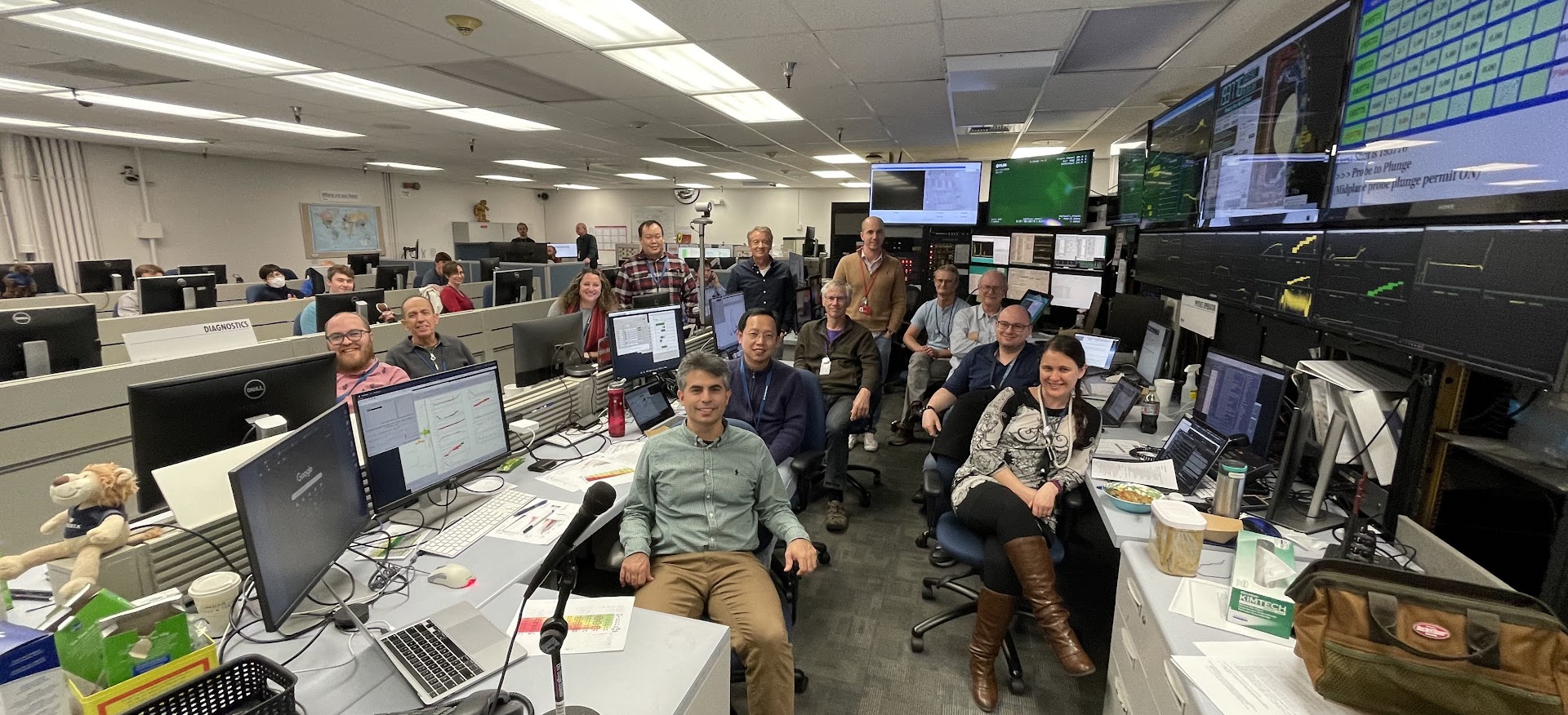As one of the most flexible and powerful tokamak facilities in the world, the DIII-D National Fusion Facility is a premier location for ground-breaking studies in magnetic fusion energy. In January and February of 2023, we completed an innovative month-long fusion research campaign on DIII-D utilizing a plasma configuration known as “negative triangularity” (NT), which has the potential to transform the tokamak path towards commercial fusion energy by providing a stable, high-performing alternative to the traditional “H-mode” approach. Notably, unlike traditional plasmas, NT plasmas do not suffer from deleterious edge localized modes (ELMs) that can pose tangible risks to plasma-facing materials in a fusion power plant environment. Further, NT offers several potential benefits of improved exhaust handling and particle confinement as a means of making future fusion energy plants more efficient and cost effective.
 Part of the 2023 DIII-D Negative Triangularity Team.
Part of the 2023 DIII-D Negative Triangularity Team.
Though work to fully understand the NT scenario is ongoing, initial investigations over the summer of 2023 have led to several invited talks and seminars around the world. This work has been picked up in many news sources, including on energy.gov, by the American Nuclear Society and by the General Atomics press. The campaign was a global collaboration and included the participation of researchers from 15 institutions.
Of particular interest to me in this space is the evolving understanding of the physics that allow NT configurations to remain ELM-free even at high heating power, as this phenomena alone could be enough to encourage the construction of future fusion devices in the NT scenario. My work over the past few years has tied the ELM-free nature of the NT edge to destabilization of infinite-n ballooning modes, a type of magnetohydrodynamic instability that prevents excess gradient growth. The importance of the ELM-free properties of NT can be noticed by comparing ELM-free NT operation to other ELM-free scenarios. Usually, the elimination of ELMs is not only delicate (requiring specific approaches) but also comes at some expense to plasma performance. Since ELMs are suppressed in NT only by the simple lever of shaping, ELM suppression in negative triangularity scenarios is very robust and compatible with enhanced core performance, indicating significant promise for reactor implementation. While my work on this topic was recently highlighted by the Department of Energy and phys.org, there remains much to be done in this field as we try to extrapolate from existing results to reactor-like scenarios.
Selected publications on this subject:
Robust avoidance of edge-localized modes alongside gradient formation in the negative triangularity tokamak edge
Nelson, A. O., Schmitz, L., Paz-Soldan, C., Thome, K. E., Cote, T. B., Leuthold, N., Scotti, F., Austin, M. E., Hyatt, A. & Osborne, T., Physical Review Letters, 131, 195101 (2023).
Simultaneous access to high normalized current, pressure, density, and confinement in strongly-shaped diverted negative triangularity plasmas
Paz-Soldan, C., Chrystal, C., Lunia, P., Nelson, A. O., Austin, M. E., Cote, T. B., Hyatt, A. W., Marinoni, A., Osborne, T. H., Pharr, M., Sauter, O., Scotti, F., Thome, K. E., Wilks, T. M. & Wilson, H. S., Nuclear Fusion, in press (2024).
Vertical Control of DIII-D Discharges with Strong Negative Triangularity
Nelson, A. O., Hyatt, A., Wehner, W., Welander, A., Paz-Soldan, C. & Anand, H., Plasma Physics and Controlled Fusion 65, 044002 (2023).